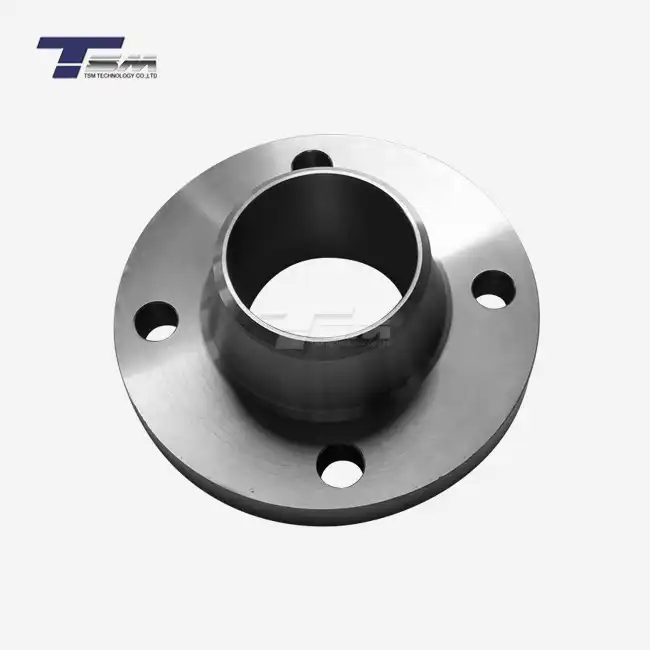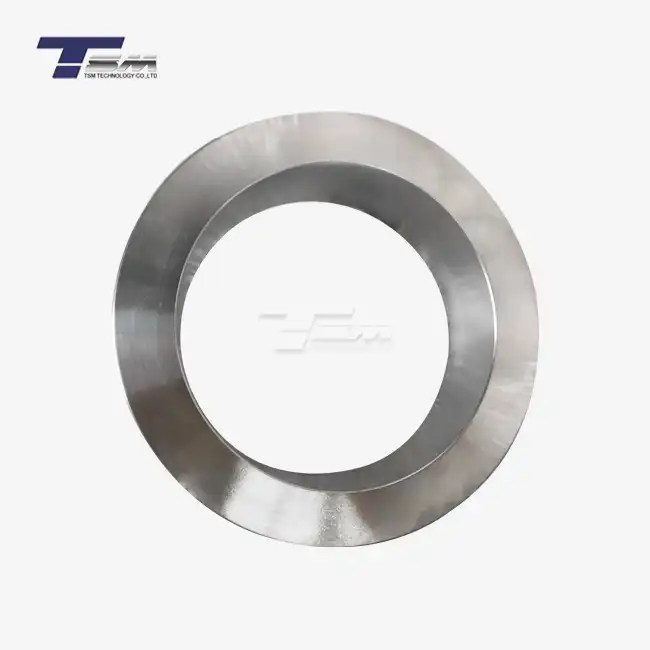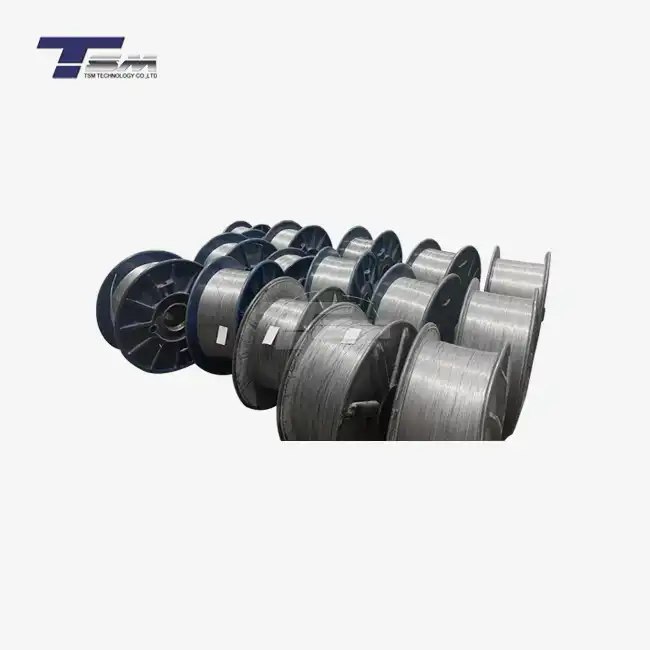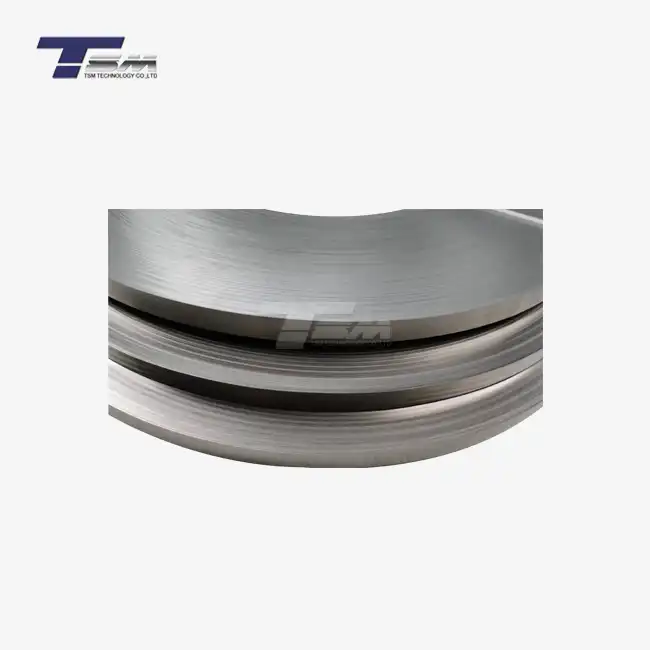The Fundamentals of Ultrasonic Testing for Alloy 600 Round Bars
Principles of Ultrasonic Inspection
Ultrasonic testing relies on the propagation of high-frequency sound waves through the material being inspected. When these waves encounter discontinuities or defects within the Inconel 600 round bar, they reflect back to the transducer, creating signals that can be interpreted by skilled technicians. This method allows for the detection of internal flaws that might otherwise go unnoticed during visual or surface inspections.

The process begins with a transducer emitting ultrasonic waves into the alloy 600 round bar. These waves travel through the material at a specific velocity, which is determined by the alloy's properties. As the waves encounter boundaries between different materials or defects, they reflect to the transducer. The time it takes for the waves to return and their amplitude provide valuable information about the location and nature of any irregularities within the bar.
Equipment Used in Ultrasonic Evaluation
Advanced ultrasonic testing equipment is essential for accurate and reliable inspection of Inconel 600 bars. The primary components include:
- Ultrasonic flaw detector: A sophisticated device that generates and receives ultrasonic signals
- Transducers: Specialized probes that convert electrical energy into ultrasonic waves and vice versa
- Couplant: A gel or liquid used to ensure efficient transmission of ultrasonic waves between the transducer and the Inconel 600 round bar
- Display unit: Typically featuring a digital screen for real-time visualization of test results
Modern ultrasonic testing systems often incorporate advanced features such as phased array technology, which allows for more comprehensive and efficient inspections of complex geometries.
Interpreting Ultrasonic Test Results
Analyzing ultrasonic test data requires expertise and experience. Technicians must be able to distinguish between various types of indications, such as:
- Porosity: Small voids within the alloy structure
- Inclusions: Foreign particles embedded in the material
- Cracks: Linear discontinuities that can significantly weaken the Inconel 600 round bar
- Laminations: Planar defects parallel to the bar's surface
By accurately interpreting these signals, quality control professionals can make informed decisions about the acceptability of each Inconel 600 round bar, ensuring that only high-quality materials are released for use in critical applications.
Benefits of Ultrasonic Testing for Inconel 600 Bar Quality Assurance
Enhanced Detection of Internal Flaws
One of the primary advantages of ultrasonic testing for Inconel 600 round bars is its ability to detect internal flaws that may not be visible on the surface. This capability is particularly important for thick sections of material where other inspection methods may fall short. Ultrasonic waves can penetrate deep into the alloy, revealing defects such as:
- Subsurface cracks
- Voids or gas pockets
- Metallurgical inconsistencies
- Lack of fusion in welded joints
By identifying these hidden imperfections, manufacturers can prevent potentially faulty Inconel 600 bars from entering the supply chain, thereby reducing the risk of component failure in critical applications.
Non-Destructive Nature and Cost-Effectiveness
Ultrasonic testing is a non-destructive evaluation method, meaning that it does not alter or damage the Inconel 600 round bar being inspected. This characteristic offers several benefits:
- Preservation of material integrity: The alloy 600 round bar remains intact and usable after testing
- Repeatability: Tests can be performed multiple times on the same specimen without compromising its properties
- Cost savings: Elimination of material waste associated with destructive testing methods
- Increased throughput: Rapid inspection of large quantities of Inconel 600 bars without sacrificing quality
The non-destructive nature of ultrasonic testing also allows for in-service inspections of components made from Inconel 600 round bars, enabling proactive maintenance and extending the lifespan of critical equipment.
Improved Quality Control and Traceability
Implementing ultrasonic testing as part of a comprehensive quality control program for Inconel 600 round bars offers significant advantages in terms of traceability and documentation. Modern ultrasonic testing systems can:
- Generate detailed inspection reports
- Store and retrieve historical data for each tested bar
- Provide digital signatures for verified inspections
- Integrate with manufacturing execution systems for seamless quality management
This level of documentation not only helps manufacturers maintain consistent quality standards but also aids in compliance with industry regulations and customer specifications. In the event of a quality concern, the ability to trace each Inconel 600 round bar back to its specific inspection results can be invaluable for root cause analysis and continuous improvement efforts.
Implementing Ultrasonic Testing in Inconel 600 Round Bar Production
Establishing Testing Protocols and Standards
To effectively implement ultrasonic testing in the production of Inconel 600 round bars, it is crucial to establish comprehensive testing protocols and adhere to industry standards. This process typically involves:
- Defining acceptance criteria based on application requirements
- Selecting appropriate ultrasonic testing methods (e.g., longitudinal, shear wave, or phased array)
- Determining optimal testing frequencies and probe configurations
- Establishing calibration procedures using reference standards
- Developing detailed work instructions for technicians
By standardizing these aspects of ultrasonic testing, manufacturers can ensure consistent and reliable results across different production batches of Inconel 600 round bars. It's also important to regularly review and update these protocols to incorporate technological advancements and evolving industry best practices.
Training and Certification of Testing Personnel
The effectiveness of ultrasonic testing for alloy 600 round bars heavily relies on the skills and expertise of the personnel performing the inspections. A comprehensive training program should be implemented, covering:
- Fundamentals of ultrasonic wave propagation in metals
- Operation and maintenance of ultrasonic testing equipment
- Interpretation of A-scan, B-scan, and C-scan displays
- Understanding of Inconel 600 metallurgy and common defects
- Hands-on practice with various flaw types and geometries
Additionally, obtaining certifications from recognized bodies such as the American Society for Nondestructive Testing (ASNT) can validate the competence of testing personnel and instill confidence in the quality assurance process for Inconel 600 round bars.
Integration with Manufacturing Processes
To maximize the benefits of ultrasonic testing, it should be seamlessly integrated into the overall manufacturing process for Inconel 600 round bars. This integration may involve:
- Implementing in-line ultrasonic testing stations at key production stages
- Developing automated systems for handling and positioning of round bars during inspection
- Creating feedback loops to adjust production parameters based on ultrasonic test results
- Establishing clear protocols for handling and segregating non-conforming materials
- Implementing data management systems to track and analyze testing results over time
By integrating ultrasonic testing throughout the production process, manufacturers can identify and address quality issues early, reducing waste and improving overall efficiency in the production of high-quality Inconel 600 round bars.
Conclusion
Ultrasonic testing is an indispensable tool in ensuring the quality and reliability of Inconel 600 round bars. Its ability to detect internal flaws, coupled with its non-destructive nature and cost-effectiveness, makes it an essential component of any comprehensive quality assurance program. By implementing robust testing protocols, investing in personnel training, and integrating ultrasonic inspection into the manufacturing process, producers of alloy 600 round bars can consistently deliver high-quality materials that meet the exacting standards of critical industries. As technology continues to advance, ultrasonic testing will undoubtedly play an even more crucial role in maintaining the integrity and performance of Inconel 600 round bars in demanding applications.
Contact Us
For more information on our high-quality Inconel 600 round bars and our rigorous testing procedures, please don't hesitate to contact TSM TECHNOLOGY at info@tsmnialloy.com. Our team of experts is ready to assist you in finding the perfect alloy solution for your specific needs.



